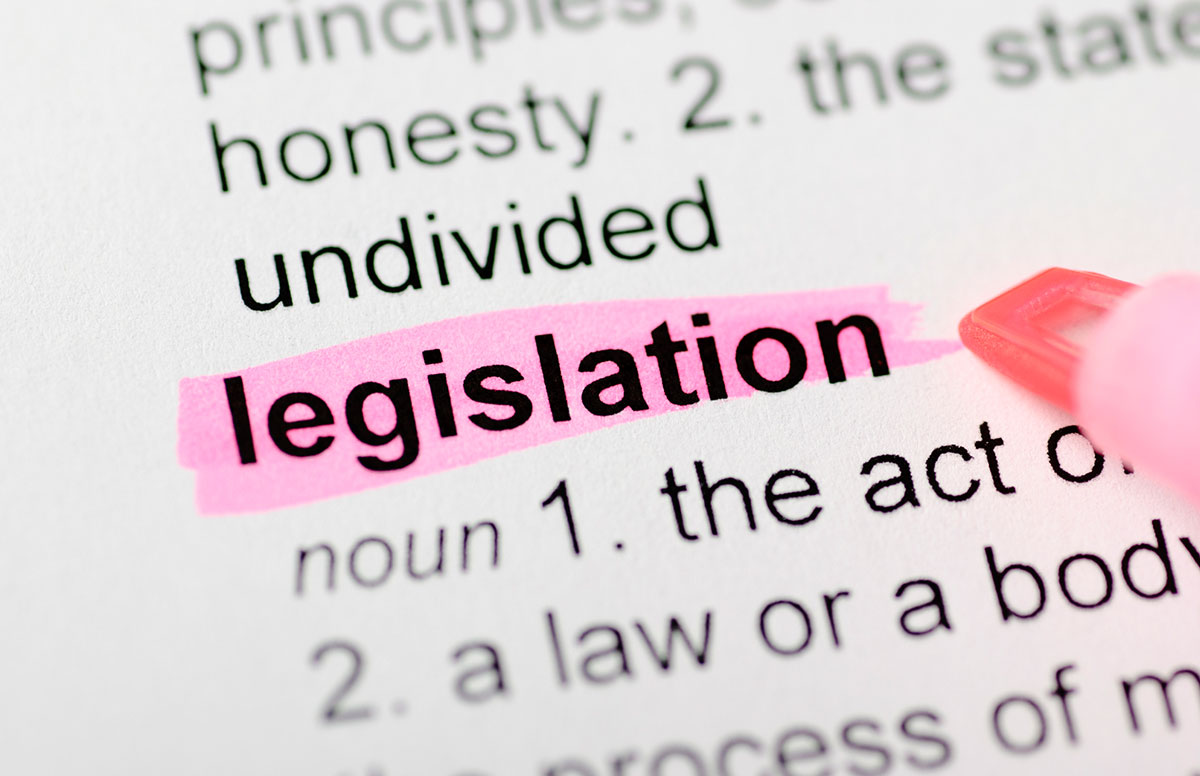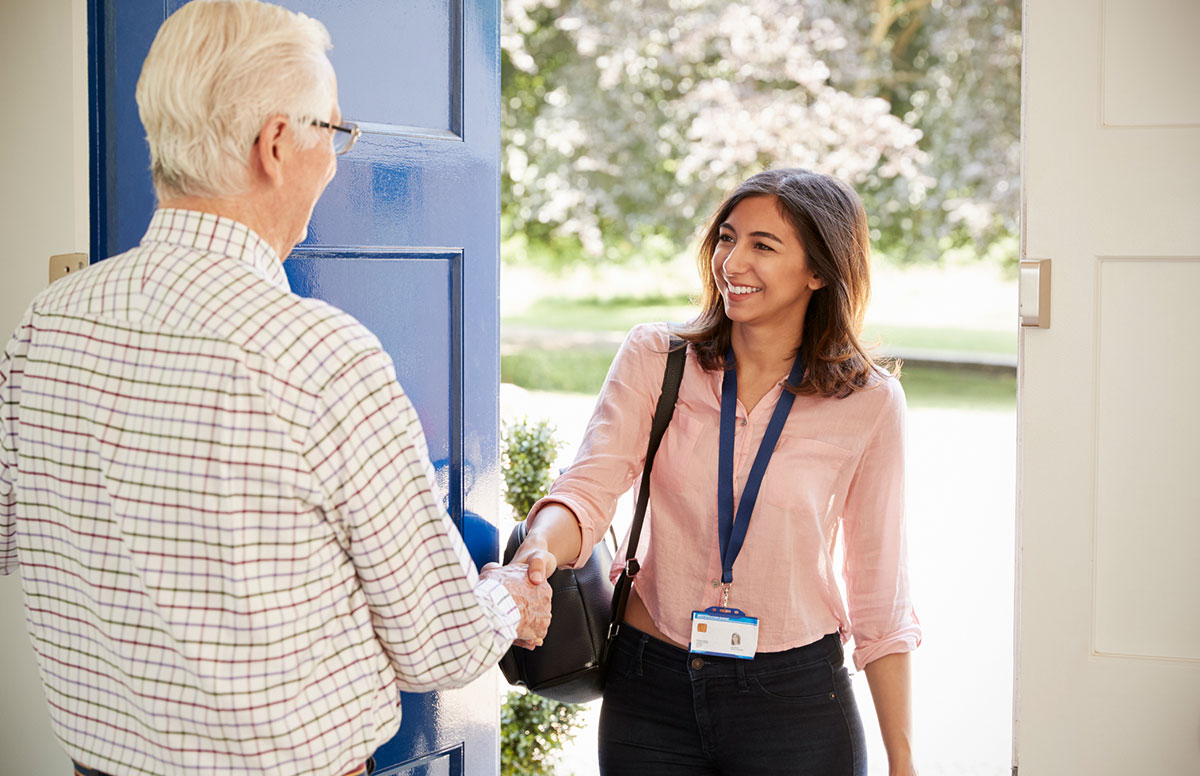LeadingAge Members Promote, Educate, and Vaccinate with CDC Grants
LeadingAge members are taking part in a national effort to increase vaccine uptake, education, and access, especially among communities of color.
LeadingAge is one of three national nonprofits partnering with Community Catalyst as part of the CDC’s Vaccine Equity and Access Program (VEAP). We distributed $10,000 grants to provider members to implement vaccine confidence-building and access strategies. VEAP’s goals are to:
- Increase vaccination opportunities within BIPOC communities and enhance provider relationships with the communities they serve to boost vaccine confidence.
- Equip influential and trusted messengers within the community to become ambassadors for COVID-19 and influenza vaccine information.
- Establish and/or build upon partnerships with state and local health departments to support vaccine access in both the short and long term.
“Aging services professionals are the heart of our country’s care infrastructure, and many direct care workers are within communities disproportionately affected by the COVID-19 pandemic. For the majority of LeadingAge grantees, the money is used for incentives for people to get information, make decisions, and choose to get vaccinated and get boosters, as well as flu shots,” says Amanda Hitchner, an initiative consultant with Collective Action Lab, which is managing the 42 grants to LeadingAge members. The funds for all of VEAP’s activities are provided by the Centers for Disease Control and Prevention.
LeadingAge has also leveraged the AD Council’s “It’s Up to You” campaign to develop CARE FULLY, a COVID vaccine education and toolkits campaign especially for Black and Hispanic direct care professionals. These materials are available free to LeadingAge members and help to educate direct care workers on COVID-19 vaccinations so they can make more informed decisions for themselves and to inspire action now.
Following are examples of how LeadingAge members are using the VEAP grants.
Serving Native Americans
Bennett County Hospital and Nursing Home, Martin, SD, sits in a rural area near the Nebraska border and between two Lakota Native American reservations, Pine Ridge to the west and Rosebud to the east, that are the poorest in the United States. The organization’s vaccination grant has enabled it to offer clinics and do multimedia outreach to residents throughout Bennett County and in both reservations.
Michael Christensen, administrator of both the nursing home and the critical access hospital, and also CEO of the attached health clinic, puts his community into perspective:
“Bennett County is 61% Native American,” he says. “In the nursing home, probably a third of the residents are Lakota-speaking, either Oglala Sioux from the Pine Ridge Reservation, or the Sicangu Lakota from the Rosebud Reservation. And natives have a very difficult time, as you can imagine, trusting white people. One man in my nursing home once said, ‘Should I trust your government to say I should be vaccinated? That’s the same government that gave my ancestors blankets that had smallpox and said this will keep you warm.’ And so there is that hesitancy to become vaccinated. We’re also mostly a farming and ranching community. And ranchers and farmers are another group that traditionally is statistically hesitant to become vaccinated.”
Christensen applied for the grant immediately upon learning about it from the South Dakota Association of Healthcare Organizations, the LeadingAge partner: “We have been the county with the lowest vaccination rate in the state,” he says, “and so COVID vaccines and vaccines in general have been a major need. This is a community that has few resources, and all critical access hospitals are struggling right now.”
The organization used some of the grant money for short-term marketing help with outreach and education about vaccines and their benefits. Radio ads, spoken in Lakota, were created for a local station that serves the Lakota community, and the station agreed to donate extra air time, on a one-for-one match for the paid time. Print ads, also in Lakota and including drawings, were developed for two native community newspapers. One of the publishers agreed to expand the ads to five weeks for the cost of three.
A local tribally owned grocery puts flyers that promote both COVID and other vaccines, printed in both Lakota and English, into customers’ grocery bags. “We have challenges with childhood vaccines, too,” says Christensen.
Bennett County Hospital and Nursing Home’s messaging focuses on family, says Christensen: “Lakota people are family-oriented, tribe is really just another word for family. One of the things we messaged was that getting a vaccine is not just to protect you as much as it is to protect your family, particularly to protect elders, who are at higher risk of getting COVID.” A health fair adjacent to the hospital is scheduled for the third week of April. The fair will promote vaccines along with a variety of other health topics.
The organization’s staff is vaccinated, apart from one employee with a medical waiver, and a few with religious objections. Unvaccinated staff wear N95 masks, face shields, and gloves. The Omicron variant hit the organization hard: Despite the vaccinated staff, 27 out of 100 employees tested positive for COVID-19 early this year.
Vaccines, Education, and Community Outreach
Stoddard Baptist Nursing Home, Washington D.C., has a “Victory through Vaccinations” program that combines vaccine and booster clinics, distribution of masks, and community outreach to educate people on the value of COVID-19 vaccinations. The CDC grant has helped cover the costs of all three.
President and CEO Steven Nash hosts a weekly radio show, “Stoddard Lives,” on a local station, WYCB (1340 AM). The show, which began a couple of years before the pandemic, appears each Tuesday, offering health or civic affairs information for an older adult audience. It includes interviews with experts and time for listeners to call in with questions.
“Dr. Rosalind Wright, our executive director of clinical services operations and support, will often appear to offer updates on COVID-19 and the effectiveness of vaccines, and to dispel myths about the vaccines,” Nash says. The show also covers other health topics–dementia, cancer, and more–often with more than one episode devoted to each major health topic.
Stoddard Baptist’s mask distribution program involves visits to local churches to encourage vaccination. Attendees each receive KN95 and N95 masks, five at a time, in special pouches printed with the Victory through Vaccinations logo, along with web addresses for the CDC and Stoddard Baptist. Water bottles printed with the same information are also given out.
The organization also holds raffles for vaccinated employees and recognizes staff that have gone the extra mile to support the grant efforts.
Nash says 80% of Stoddard Baptist residents are vaccinated, and that only three out of 600 staff have not been vaccinated. Those employees applied for religious exemptions but, as Nash says, “We’re finding out that they are not accepting these exemptions, so they’ll probably have to be vaccinated by the end of March.”
Nash says that if there is a second round of grants, Stoddard Baptist will try to have more vaccine clinics, though it has become more difficult because vaccine providers are less willing to travel on-site.
Becoming a Community Resource
Lakeview Village, a life plan community in Lenexa, KS, has been hosting COVID-19 vaccination clinics since early 2021, accounting for more than 4,000 shots in that time. Clinics initially were operated by CVS and HyVee, until Lakeview Village became an approved vaccine administrator in May 2021. The community is now listed as a public vaccination site on the local government website and a vaccine hotline. Clinics are held weekly, with no appointments required.
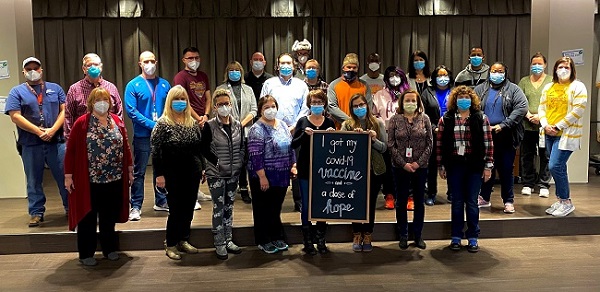
with CVS.
Just since receiving its vaccine grant in November, Lakeview has given out close to 1,500 shots, according to Chief Operations Officer Pam Hermon.
Lakeview Village has been absorbing the cost of clinics, which at one point were serving 150 or more people at a time during four-to-five hour windows of operation.
“To make this work, we were taking around 10 staff from their positions, and bringing them down to [work in] the clinic,” Hermon says. “The grant helped offset that cost to Lakeview. It also helped us pay for the supplies that we were still responsible for–gloves and sharps containers and paper and bandages.” Lakeview Village sits on 100 acres, so there have been transportation costs as well, to bring residents to the vaccination site.
Staff have also traveled to other older adult housing or assisted living communities to hold clinics. Lakeview Village ran clinics at a HUD property it manages in Olathe, KS. It has also held clinics at three other communities that requested its help, and Lakeview’s home health service has been bringing vaccines to clients’ homes.
Lakeview Village has had good success in vaccinating residents and staff. Among residents, 98% have received the two initial doses and 96% have been boosted. Among staff there is a 93% vaccination rate, and 55% have received boosters.
The organization was one of the three grantees who will receive a second $10,000–funds that could not be used by other grantees who dropped out of the program at the last minute.
The Wesleyan, a full-continuum community in Georgetown, TX, became a state-approved vaccine provider in early 2021, and has hosted regular vaccination clinics since.
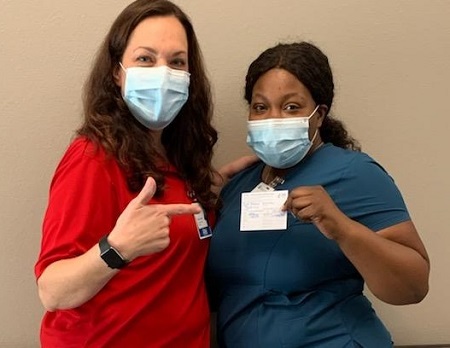
“When we learned about the CDC grant, Williamson County’s infection rate from the Delta variant was finally dropping, but the holiday season was ahead,” says Kelly Goetz, RN, chief compliance officer at The Wesleyan. “We had already planned to host weekly clinics through the end of 2021 when we were awarded the grant, but it was an affirmation for what we were doing.”
The 55 clinics held as of March 2022 have given nearly 2,500 shots.
More than 75% of The Wesleyan’s vaccination clinics have been open to the public. It uses recommendations and communication strategies from the CDC, the Texas Department of State Health Services, and the Williamson County and Cities Health District to encourage vaccine education and uptake. Announcements and flyers are sent to emergency services, the chamber of commerce, and local congregations. Social media posts and employee newsletters often include educational updates along with an online sign-up for clinics. The grant enabled this broader outreach to continue.
Education and clear communication have been the keys to the program, says Goetz. Topics include understanding the COVID-19 virus, general vaccination education including the safety of the vaccine, and what the vaccine is made of. “Some individuals sought general information regarding the vaccinations. Others needed clarification on timing, and some have been concerned with potential side effects,” she adds.
Among residents, hesitancy was minimal, says Goetz, but there was some among staff. The Wesleyan’s overall vaccination rate for residents is 97%, and 93% for staff.
Incentivizing Unvaccinated Staff
Martha Franks Retirement Community, Laurens, SC, has used its grant to support vaccine clinics for residents and staff, and to counsel vaccine-hesitant staff. According to Executive Director Pollyanna Franks, the organization initially had 120 staff (out of 180 total employees) who were unvaccinated. It launched a program in which department heads met one-on-one with employees to learn why they were hesitant about the vaccines, and to encourage them to share their concerns. Staff with medical questions were referred to the infection preventionist (a registered nurse), or their own physicians, for more clinical details.
“There was misinformation they had [received], and we gave them direct information from the CDC, from the Department of Health–which was constantly providing information–and of course LeadingAge,” says Franks. Staff with religious concerns were encouraged to meet with the chaplain or their own pastors, she adds.
The staff vaccination rate has now reached 77%; unvaccinated staff are required to be tested twice weekly, wear N95 masks, and face shields or goggles as long as Laurens County is in the red or orange zone for COVID-19 infections.
Martha Franks Retirement Community has hosted five vaccine clinics, three of them provided by Walgreens and two by the South Carolina Department of Health and Environmental Control (DHEC). The $10,000 grant enabled the organization to give overtime pay (or bonuses to salaried staff) who worked extra hours at the clinics and in educating employees. It also covered incentives, such as $25 Walmart gift cards, to staff for being vaccinated.
Martha Franks was one of three grantee organizations who received a second $10,000–funds that could not be used by other grantees who dropped out of the program at the last minute. Franks says the money will enable another vaccine clinic, counseling for a group of new employees, and incentives.
Do you have a story of innovation to tell? The LeadingAge Story Collector, powered by Greystone, makes it easy to submit yours. Try it now.
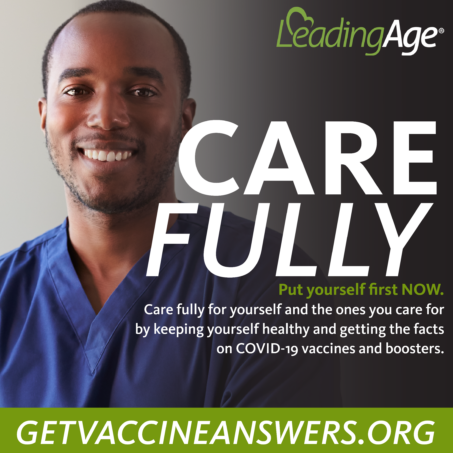
Most Recommended
July 03, 2025
 Budget Reconciliation 2025
Budget Reconciliation 2025
June 27, 2025
Pathways for Foreign-Born Workers
Recently Added
July 03, 2025
 Update and Insights: SNF Off-Cycle Revalidations
Update and Insights: SNF Off-Cycle Revalidations
July 02, 2025
